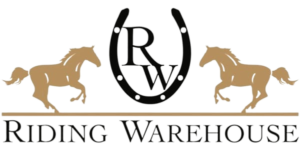by Sedra Member, Maris Ramsay on July 5, 2013
50+ Light & Healthy Potluck Recipes
Summer Potluck Recipes
11 Best Southern Potluck Recipes
Easy Potluck Recipes That Actually Taste Good
(Perfect) Potluck Main Dishes
It is not uncommon here in the southeast to find potluck dinners at rides. Sometimes the Ride Manager will plan a potluck for one night of a multiday. Sometimes the riders get together and have one on a smaller scale. Not all rigs (gasp!) have a refrigerator available. Not all refrigerators run on propane. Sometimes, we just have to depend on an ice chest to keep our food fresh. How safe is our food? How long can food sit out on the table? How cold is cold enough, and how hot is hot enough? And how important is it to be on time for dinner if it is a potluck?
 Every year, more than 76 million cases of food borne illness occur in the United States, and the number increases yearly. Symptoms can be mild or quite severe, and are generally worse in the most fragile: babies, pregnant women, and the elderly. Bacteria grow best between 40 and 140 degrees. Most of the food served on the picnic table will be safe on the table for only about 2 hours, unless the temperature is above 90 degrees, and then limit the time on the table to 1 hour. Once leftovers have been on the table that long, don’t keep them, and throw the leftovers away.
Every year, more than 76 million cases of food borne illness occur in the United States, and the number increases yearly. Symptoms can be mild or quite severe, and are generally worse in the most fragile: babies, pregnant women, and the elderly. Bacteria grow best between 40 and 140 degrees. Most of the food served on the picnic table will be safe on the table for only about 2 hours, unless the temperature is above 90 degrees, and then limit the time on the table to 1 hour. Once leftovers have been on the table that long, don’t keep them, and throw the leftovers away.
Do not prepare or purchase foods for the picnic more than 1 day before the event, unless it is to be frozen. Cooked foods should be cooled rapidly in shallow pans, less than 2” deep. Frozen foods should be defrosted in the refrigerator, not room temperature.
Cold food should be kept below 40 degrees. Pack cold foods in a sturdy ice chest with plenty of ice or gel packs. Wrap foods in plastic wrap and completely submerge the containers in ice. Food will not stay cold enough to prevent bacterial growth when left on top of ice or ice packs. Consider packing cold drinks in a separate cooler from the food, so that repeated openings and closings will not disturb the meat and other cold foods.
Mayonnaise based foods should be kept chilled for as long as possible before serving, and served cold. Despite the misconception, mayonnaise is not the culprit that causes spoilage. It is too acidic by itself to allow bacterial growth, as is mustard and ketchup, but once it is mixed with other ingredients, especially high protein foods that have been handled a lot, bacteria will start to grow if it is allowed to get warm. Take out only the portion that will be used in the next hour; leave the rest in the cooler. When serving the remainder, use clean utensils.
Cut melons should be kept cold. Before cutting, fruits with rinds can be kept at room temperature for several days, but cut watermelons and cantaloupe can cause food borne illness. Salmonella and Shigella are often present on the rinds. Wash the melons carefully before cutting, and then refrigerate the cut pieces. Melons are not acidic, and the cut fruit can allow bacterial growth.
Keep hot foods at 140 degrees or hotter. Hot foods can be wrapped in towels then newspaper and placed inside a box or heavy paper bag, but should be eaten within 1 hour. Casseroles should be cooked to an internal temperature of 165 degrees, and then kept at least 140 degrees until served. If electricity is available, a crock pot will keep casseroles warm enough for safety.
Foods that don’t need heat or refrigeration are smart option for those who don’t have living quarters. Peanut butter, dried fruits, unpeeled fruits like apples and oranges, unopened cans of food, meat, fish or fruit, cookies and cakes, crackers, breads and chips.
Foods that will be cooked at the picnic should be handled as in a restaurant kitchen. We have enough dirt and grime at a ride, more is not better. Washing hands, utensils, and containers before cooking is appreciated. Even better, use disposables to handle the raw meat, and use separate disposables to handle the cooked meat. And never the twain shall meet. Thoroughly cook the food all the way through at one time. Never partially cook food at home with the plan to finish the process at ride camp. This allows bacteria to grow and form toxins. Not all toxins are inactivated by heating. Grill chicken until there is no pink left and the juices run clear. Burgers should be cooked until there is no pink left. Rare beef can be cooked to 140 degrees, but hamburgers should always be cooked to 165, as the meat has been handled more and is therefore more at risk of contamination. Marinate foods in the refrigerator. If you are planning on using the same sauce on the cooked food, then reserve some of the sauce separately for use at the table before adding raw meat.
If you are planning on bringing food to share, please plan to bring serving utensils too. Clean serving utensils for each dish, and don’t allow guests to serve themselves with the same utensils that they have been using to eat with.
See you on the trail!











